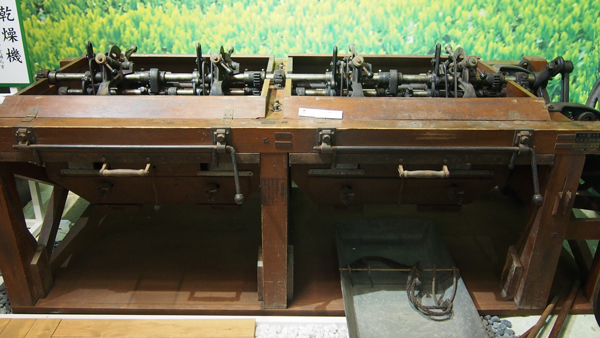Sencha Semantics
Posted by Arthur Tong on 27th Mar 2017
You may have noticed we’ve been debunking some common tea misunderstandings and here’s another one. No time more apt than after young Bridget’s recent return from Kyoto.
Though the original “jian cha” dating back at least 2000 years is Chinese, “sencha” as we know it today, is Japanese.
Jian cha and sencha, is supposed to be the same thing. The Chinese characters and Japanese kanji for this tea are and means, the same. Basically, “jian cha” is simply the Chinese romanisation and “sencha” is the Japanese romanisation of the same words “煎茶”.
Before explaining how and why there is a difference in the latter Japanese version, let me submit first that the respective language romanisations are and should continue to be used to distinguish the difference given the tea’s diverging evolution between the two nations.
So how and why did the Japanese version come about?
After studying green tea from the Chinese during the Song Dynasty, Japanese farmers began growing tea in Kyoto. At that time, powdered greens was the trend and loose leaf tea did not become popularised in Japan until about 500 years ago.
Both the Chinese and Japanese production of this tea requires steaming to halt oxidation to retain the leaves’ greenness. (Ironically, the first character jian/sen actually means pan fried or pan roasted but that refers to the latter finishing process). However, over the years, there’s been a number of reasons why the Japanese are distinctly different. One of which is the fine kneading process through a sei-ju-ki (fine shaping machine) which give it a needle like form. Terroir specific to Japan and exact cultivar used also give the Japanese version its idiosyncratic richer green and shinier coating along with its grassy, marine flavour. Of course, not all grades of sencha have these characteristics but the baseline middle grades and above should.
sei-ju-ki (fine shaping machine) |
Sencha became and remains the most popular form of tea in Japan. Its domestic fervor has since swept the world giving us another reason why it should be distinguished from the original Chinese version and its subsequent jumping-on-the-bandwagon “China Sencha” – the Chinese version of a Japanese version of a Chinese tea! It’s hard to say how much “China sencha” deviates from the original jian cha but it’s certainly very different from today’s sencha.
Today’s cheaper Chinese jian cha or “china sencha” have a flatter, broader leaf form, it does not have the ocean green nor marine notes of sencha. It does not have its density and weightiness. On taste, today’s Chinese version often have a singular dominant vegetal (spinach) note, sometimes with a hint of cut grass. The Chinese versions tend to be much less sensitive to water temperature too.
“China sencha” is now sold and bought as a substitute to the Japanese often unbeknownst to the restaurateur. In turn, they peddle it simply as “sencha” causing further confusion to the market.
So the question is, what exactly are you looking for? If you’re a sencha enthusiast, then you’d already know the difference. For those who are just starting out in carrying sencha, this will hopefully help you delineate between the types and set expectations right. Those that are simply looking for a house green tea, get to know the difference between the two countries’ offerings by all means but beyond that, note that there are many other green teas other than jian cha or sencha. Sencha has been so popularised that it has also become mistakenly synonymous with the broader term “green tea”. This of course is not the case. Ask your purveyor for their range of greens and which ever you choose, correct naming on the menu goes a long way.
Read more about the nuts and bolts of sencha processing.

